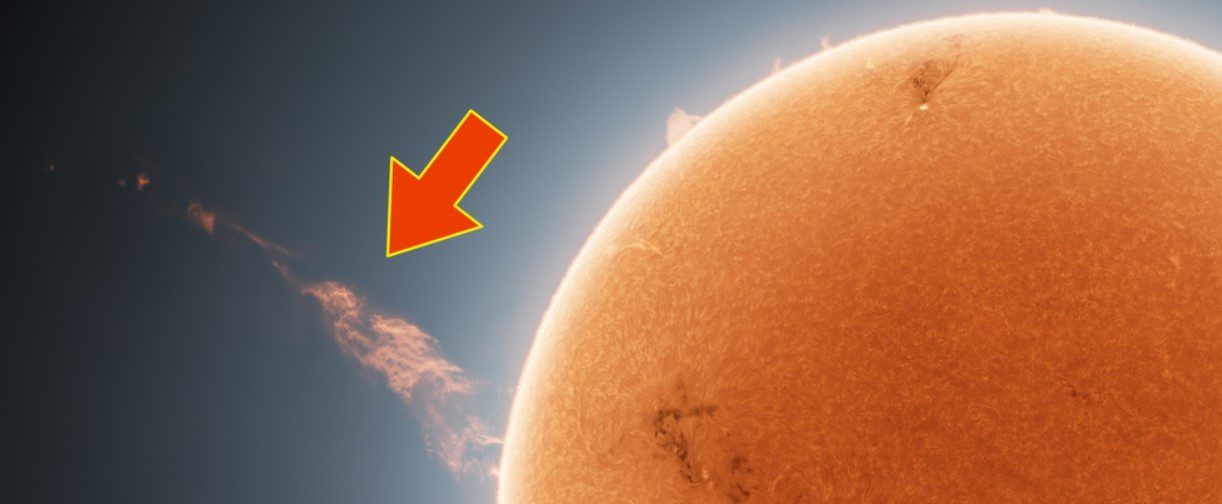A fantastic image shows a million-mile-long plume emerging from the Sun, and it’s like nothing you’ve seen before. Professional astrophotographer Andrew McCarthy took the incredible picture.
According to the astrophotographer, the blazing filament, also known as a coronal mass ejection (CME), reached a span beyond 1 million miles (1.6 million km) from the solar surface. Read out below for all the amazing details!
Intriguing Phenomenon Captured on the Sun
Andrew McCarthy, a skilled astrophotographer, took the shot on September 24 and posted it on Reddit on the r/space subreddit. As previously mentioned, the blazing filament, aka CME, reached into space over 1 million miles (1.6 million km) from the solar surface. That’s quite the phenomenon, and when captured, it’s genuinely intriguing!
McCarthy said:
We’ll see more of these as we head further into solar maximum; the plasma plumes are also likely to get “progressively larger.
Check out the photo below:

According to McCarthy, the image is a false-color time-lapse composite built from millions of photographs taken over a six-hour period. And the best part is that every second, between 30 and 80 unique photographs were taken and saved in a special file that eventually reached a maximum size of about 800TB (can you believe that?!). The CME was then shown beautifully in close detail by combining the photos.
Quite breathtaking, isn’t it?!
Well, there’s more! Although the Sun’s surface and CME seem orangish in the shot, they’re not actually like that. There’s something else in the mix.
The hydrogen-alpha or H-alpha light emanates from the chromosphere (that’s the lowest layer of the Sun’s atmosphere), and CMEs are a form of light that occurs naturally.
Moreover, the Sun still has a strange white halo that jumps out against the black background of space, but the remainder of the image is not orange-filtered. How cool!
But why are CMEs so fascinating? Since the Sun entered the solar maximum, a period of enhanced solar activity that lasts around seven years, CMEs have actually grown in frequency. We’ll get to see more of that soon!












Leave a Reply